Sound Association Normal Alphabet Worksheets for 6-Year-Olds
10 filtered results
-
From - To
Boost your child's phonetic understanding with our Sound Association Normal Alphabet Worksheets designed specifically for 6-year-olds. These engaging worksheets help young learners connect letters with their corresponding sounds, enhancing their early literacy skills. With fun activities that incorporate animals, objects, and images, children will enjoy identifying, matching, and practicing sounds through varied exercises. Perfect for home or classroom use, these worksheets not only make learning enjoyable but also build a strong foundation for reading and writing. Explore our resources now to support your child's journey towards becoming a confident reader! Ideal for fostering a love for learning in a playful way.


Long and Short Vowel Match up Reading Worksheet
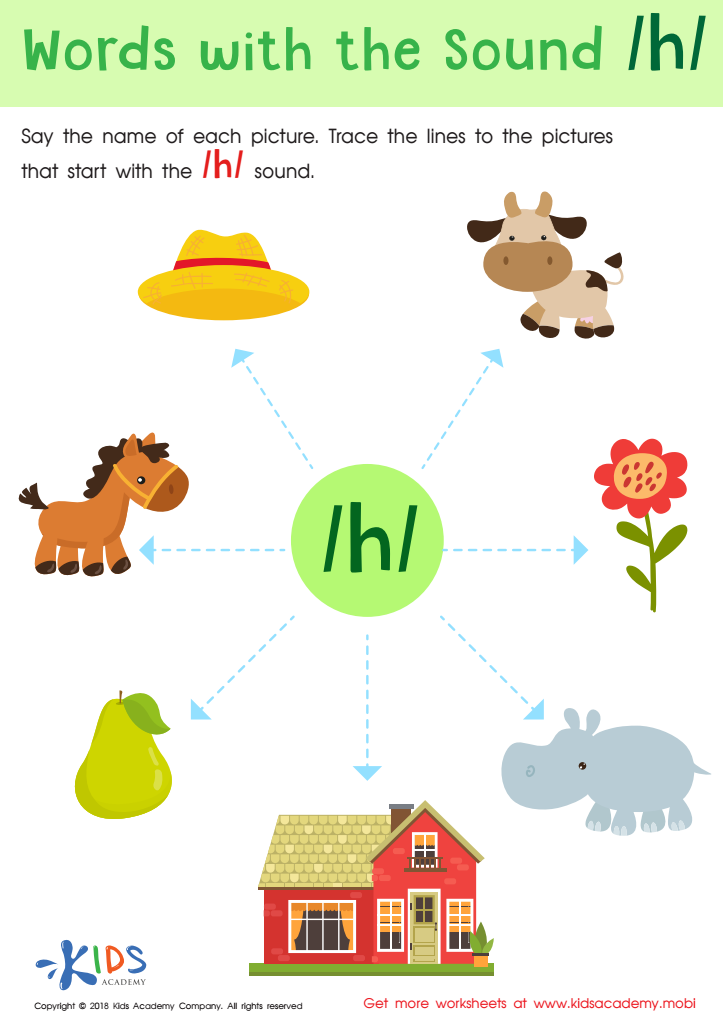

Words with sound h Reading Worksheet
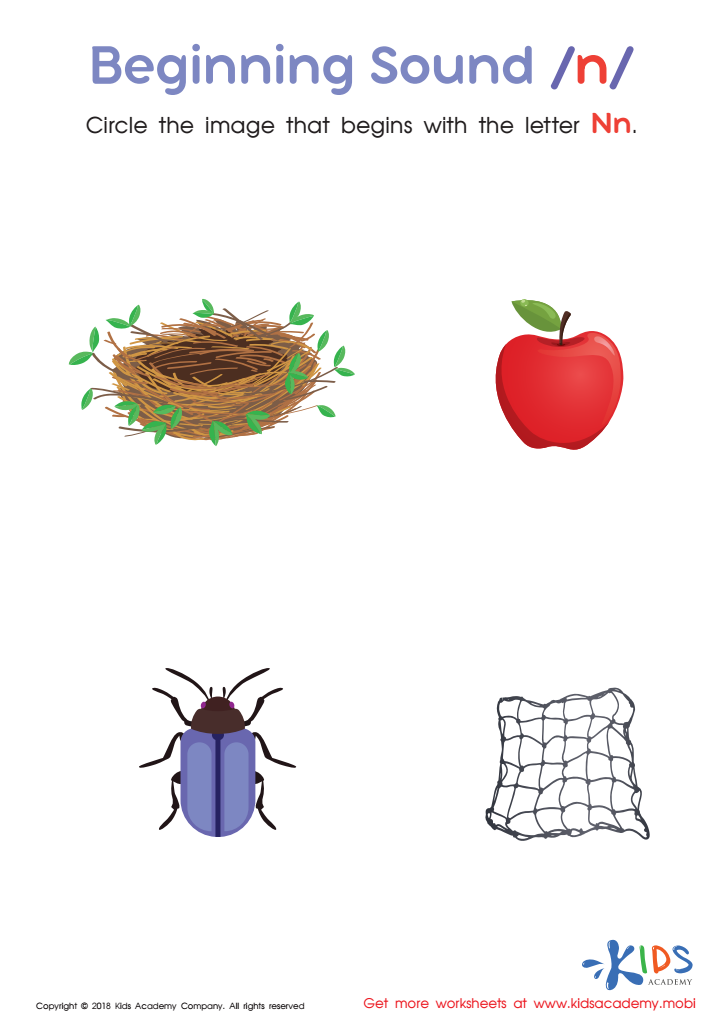

Beginning Sound «n» Worksheet
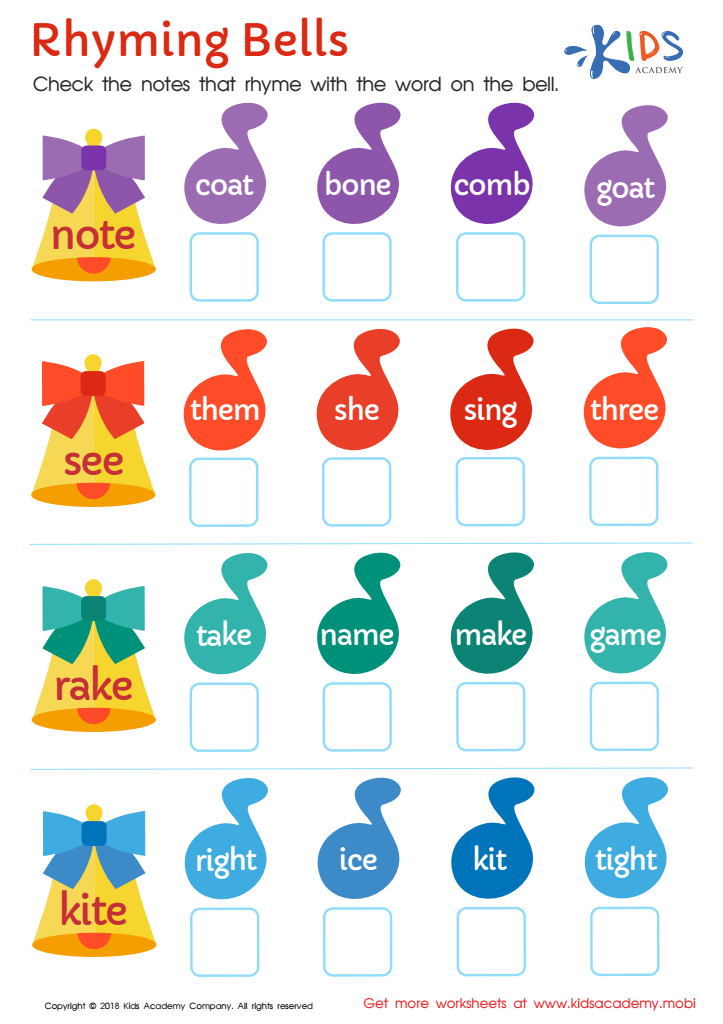

Rhyming Bells Worksheet
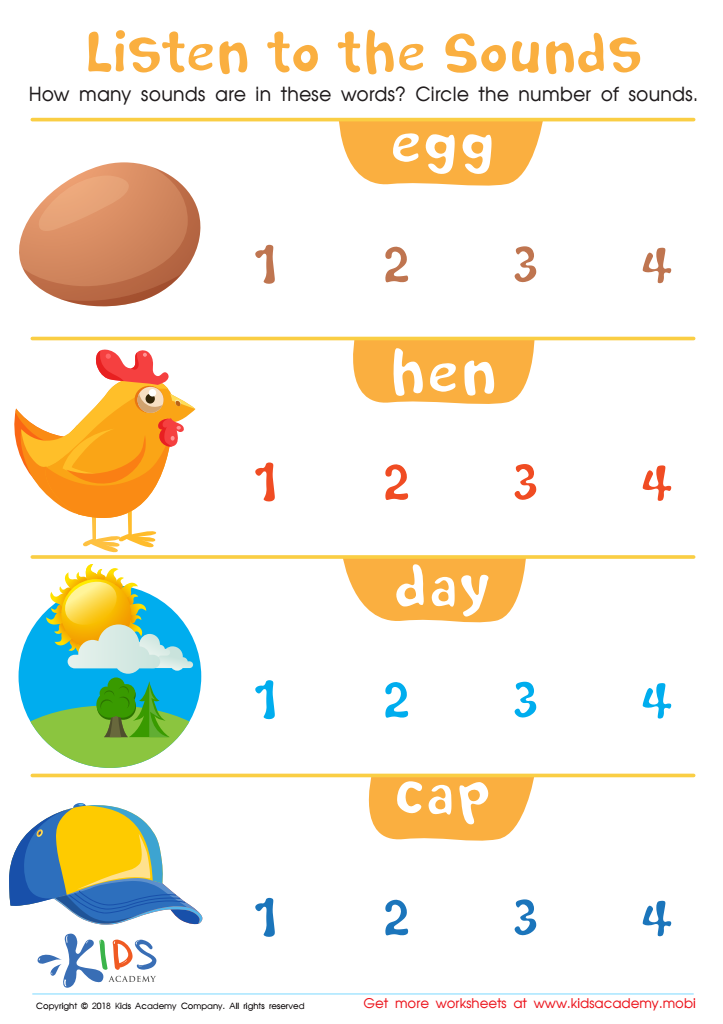

Listen to the Sounds Worksheet
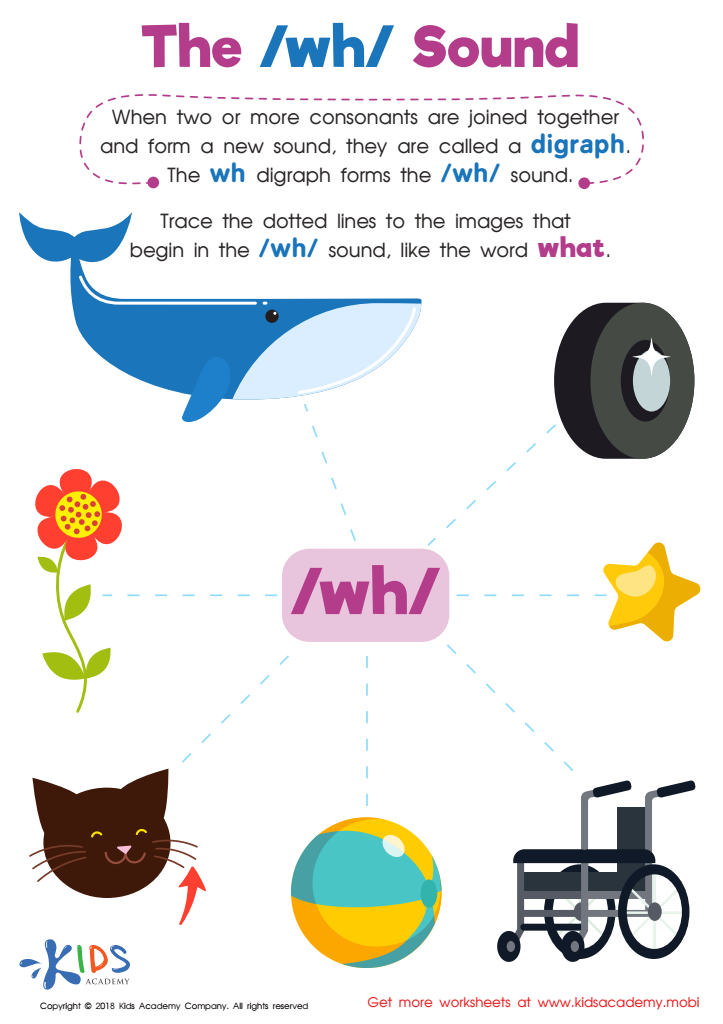

The /wh/ Sound Worksheet
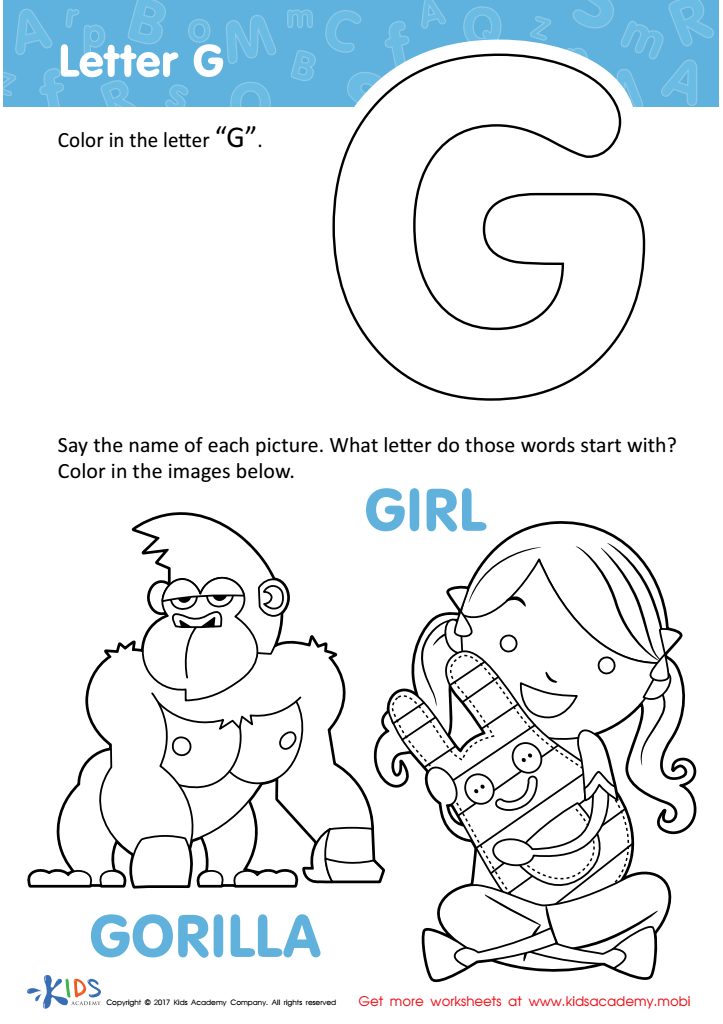

Letter G Coloring Sheet
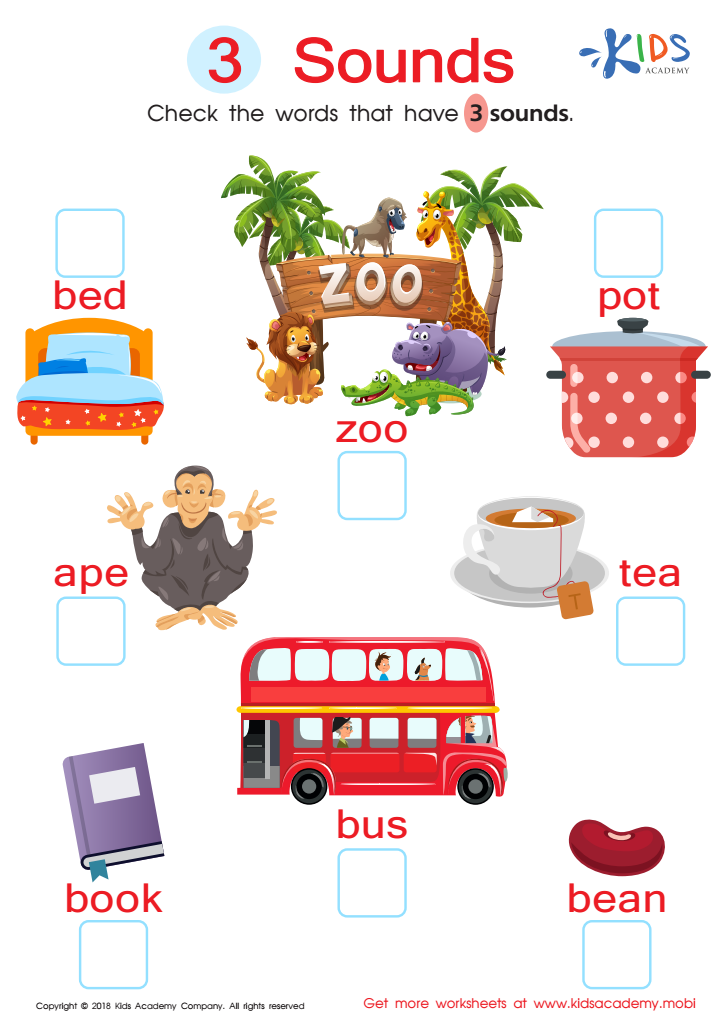

3 Sounds Worksheet
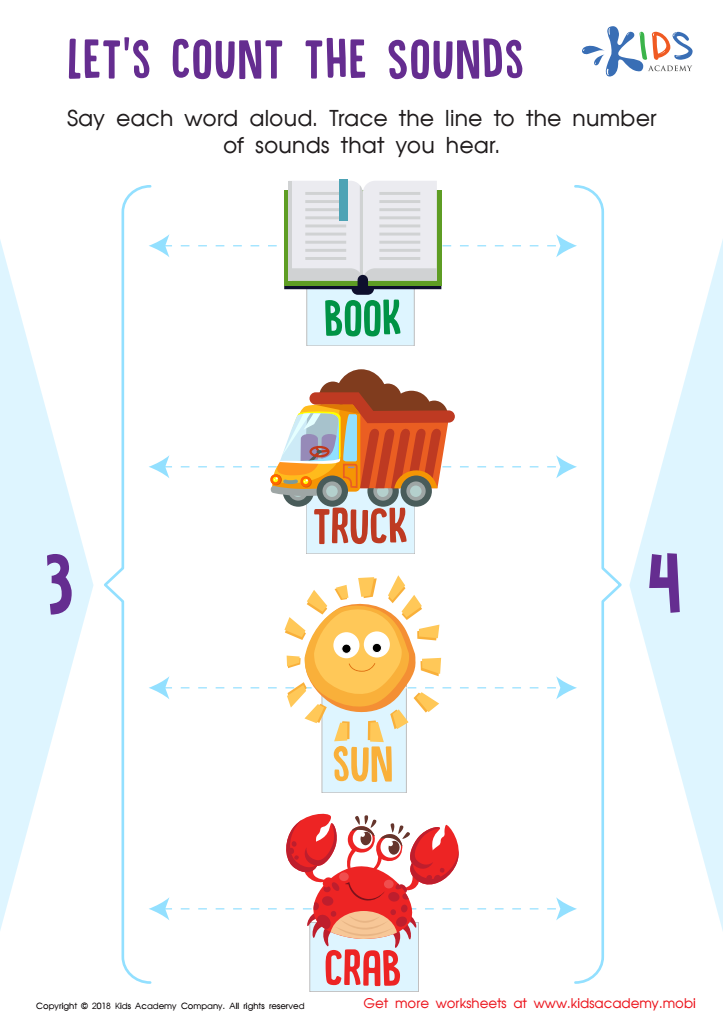

Let's Count the Sounds Worksheet
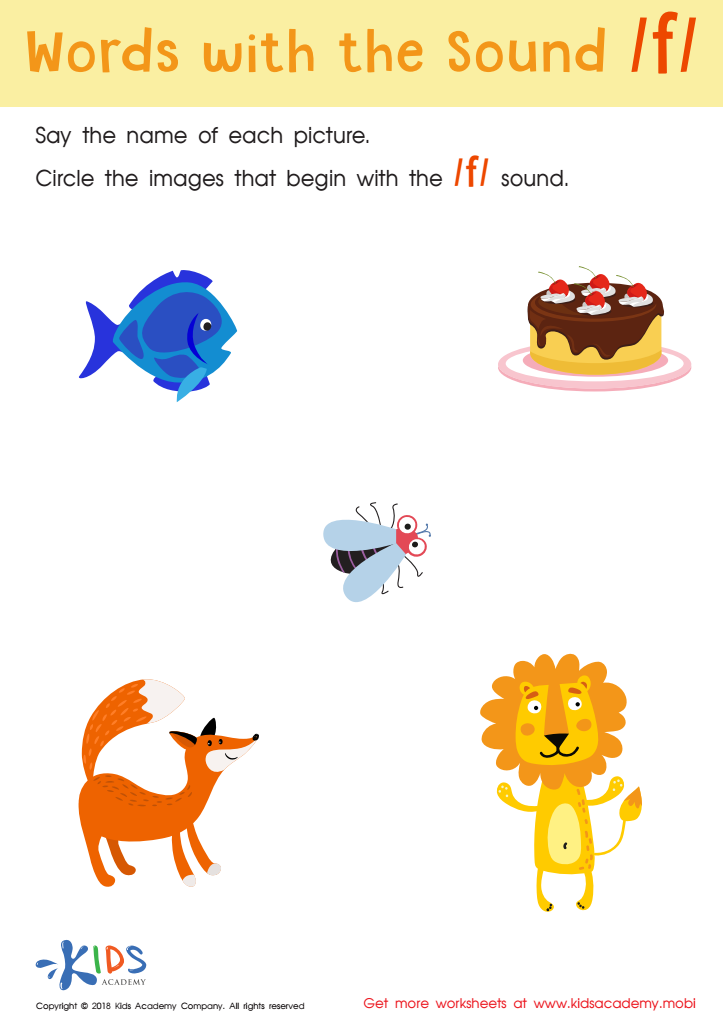

Words with sound f Reading Worksheet
Sound Association with the Normal Alphabet is essential for six-year-olds as it lays the foundation for literacy and communication skills. At this tender age, children are rapidly developing their ability to connect sounds with letters, which is crucial for reading and writing. Teaching them how individual sounds correspond to specific letters helps enhance phonemic awareness, enabling them to decode words effectively.
Moreover, understanding sound-letter associations promotes vocabulary development, as children begin to recognize the sounds in new words and connect them to their meanings. This skill contributes to their overall academic success, as literacy proficiency is linked to performance in all subjects.
For parents and teachers, engaging children with Sound Association encourages confident oral communication and fosters a love for reading from an early age. Fun activities that integrate games and songs can make learning enjoyable, ensuring a positive attitude toward education. Ultimately, caring about this crucial aspect of learning means investing in a child's future, equipping them with the tools necessary to succeed in school and beyond. By supporting sound-letter associations, we empower young learners to articulate their thoughts clearly and participate actively in their learning journey.
 Assign to My Students
Assign to My Students













